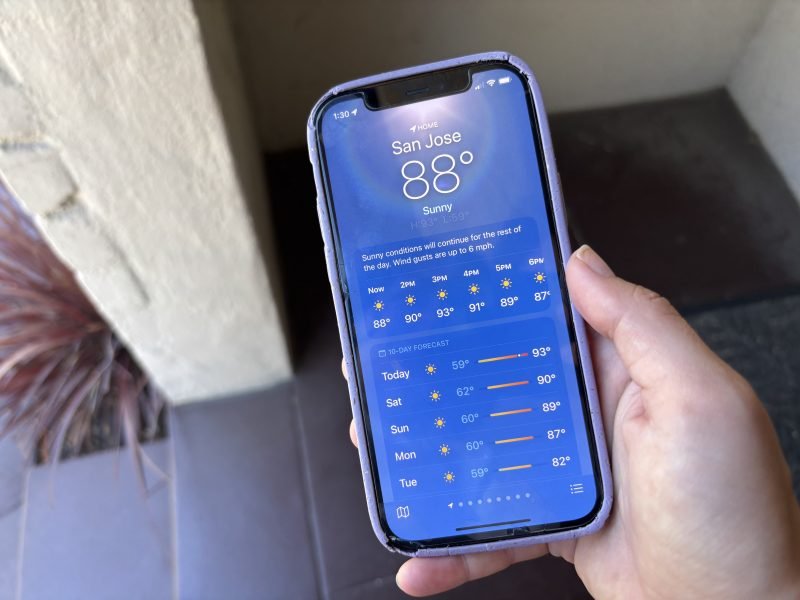
(NEXSTAR) – If you’re making plans for next weekend and the weather forecast on your phone looks terrible, don’t panic. The high temperature forecasted by your phone may be pretty different by the time the big day rolls around.
You may have been burned by a weather app before, whether it overestimated the heat or underestimated the rain several days in advance. Jim Danner, senior meteorologist at Nexstar, explained these types of apps can be wrong for two main reasons.
First, an app is only as good as the data that’s feeding it. Often, what models are being used to populate those forecasts isn’t transparent to the average person, and the quality can vary widely from app to app. “Everybody wants to do a weather app now,” Danner said. “So if everybody’s doing it differently you’re going to get different numbers.”
The other problem, Danner explained, has to do with the uncertainty of predicting weather more than a few days out.
“When you start getting to seven days and beyond, you’re really pushing the envelope there,” he said. Danner, who has an iPhone, said in his experience, the standard Apple Weather app does pretty well predicting weather three to five days out, but tends to be less accurate further than that (as any forecast tends to be).
If you want a better shot at getting the right forecast, Danner suggested checking the National Weather Service or the forecast from your local TV meteorologist. Meteorologists that live and work in a market know which weather models are most accurate for that region’s seasonal patterns, topography and quirks.
“When a forecaster comes on duty, their first order of business is to become familiar with what is currently happening in the weather. This includes looking at satellite imagery, surface data, precipitation reports, and getting a briefing from other forecasters on duty,” explained meteorologist Mark Bloomer in a post for the National Weather Service.
They combine data with their knowledge of the atmosphere to make predictions about what will happen later that day, tomorrow and beyond.
“Forecasters deal with many forecast models that are run several times a day and must decide which ones to rely on based on how well they seem to be handling current weather, how realistic their output is, and how consistent the forecast models are being from one run to the next,” Bloomer continued. “The forecaster may even decide that no model can be relied on at that time.”
“I would spend well over an hour putting together my forecast every morning,” Danner said, remembering when he worked as a local meteorologist in Texas. “These meteorologists make a living knowing their region. … So you get that human touch.”


